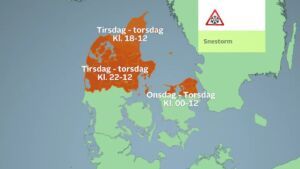News
Danish researchers predict billions of habitable planets in Milky Way
This article is more than 10 years old.
Team uses satellite data and calculation to forecast existence of planets with water
A group of researchers from the Niels Bohr Institute at the University of Copenhagen and the Australian National University have conducted an analysis of planetary systems in the Milky Way to assess the probability of there being habitable planets in our galaxy.
According to their calculations, there are billions of stars with one to three planets in the so-called habitable zone – where there is the possibility of there being liquid water and where life could exist.
New version of old law
The researchers used data of planets discovered using NASA’s Kepler satellite and a new version of the 250-year-old Titus-Bode method for predicting the existence of unobserved planets using the orbital periods of known planets in the same solar system.
Steffen Kjær Jacobsen, a PHd student in the Astrophysics and Planetary Science research group at the Niels Bohr Institute, explained the methodology. “We decided to use this method to calculate the potential planetary positions in 151 planetary systems where the Kepler satellite had found between three and six planets,” he said.
“In 124 of the planetary systems, the Titius-Bode law fit with the position of the planets as good as or better than our own solar system. Using Titus-Bode’s law we tried to predict where there could be more planets further out in the planetary systems. But we only made calculations for planets where there is a good chance you can see them with the Kepler satellite.”
Urging further research
The team predicted a total of 228 planets in the planetary systems observed.
The habitable zone of a solar system depends on the size and brightness of the star. The researchers found there were between one and three habitable planets for each planetary system. When the results are extrapolated for the rest of the galaxy, the researchers predict the existence of billions of planets in the Milky Way alone.
The team is urging other researchers to look at the data from the Kepler satellite again for signs of the planetary systems they have predicted, since many of them should be observable.
The results are published in the journal Monthly Notices of the Royal Astronomical Society.










































